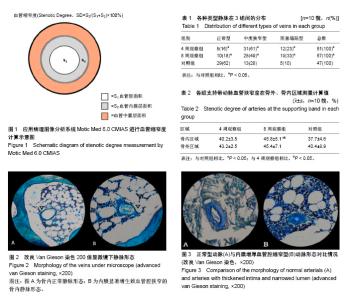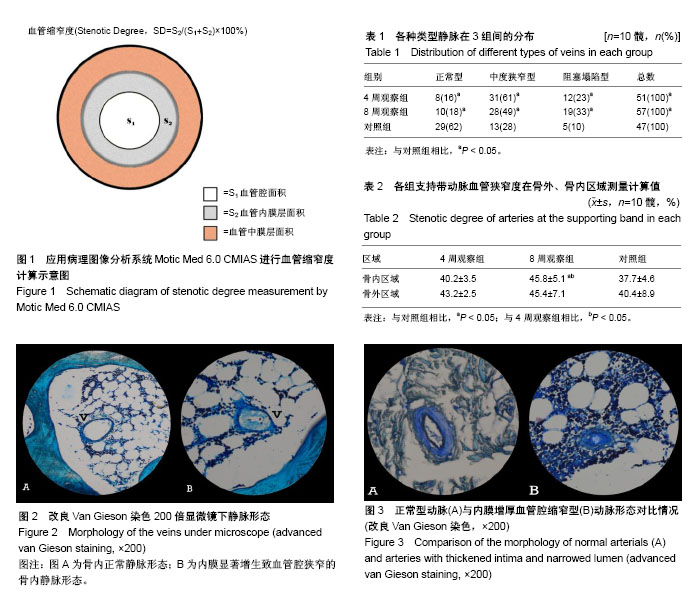| [1] Matsui M, Saito S, Ohzono K, et al. Experimental steroid-induced osteonecrosis in adult rabbits with hypersensitivity vasculitis. Clin Orthop Relat Res. 1992;(277): 61-72.[2] Iida S, Harada Y, Shimizu K, et al. Correlation between bone marrow edema and collapse of the femoral head in steroid-induced osteonecrosis. AJR Am J Roentgenol. 2000; 174(3):735.[3] Asano T, Takahashi KA, Fujioka M, et al. Genetic analysis of steroid-induced osteonecrosis of the femoral head. J Orthop Sci. 2003;8(3):329-333.[4] Nagasawa K, Tada Y, Koarada S, et al. Prevention of steroid-induced osteonecrosis of femoral head in systemic lupus erythematosus by anti-coagulant. Lupus. 2006;15(6): 354.[5] Wang GJ, Moga DB, Richemer WG, et al. Cortisone induced bone changes and its response to lipid clearing agents. Clin Orthop Relat Res. 1978;130(130):81.[6] Jr JJ. Concepts of etiology and early pathogenesis of osteonecrosis. Instr Course Lect. 1994;43(43):499.[7] Yamamoto T, Hirano K, Tsutsui H, et al. Corticosteroid enhances the experimental induction of osteonecrosis in rabbits with Shwartzman reaction. Clin Orthop Relat Res. 1995;(316):235-243.[8] Jr JJ. Fat embolism, intravascular coagulation, and osteonecrosis. Clin Orthop Relat Res. 1993;292(292):294. [9] Warner JJ, Philip JH, Brodsky GL, et al. Studies of nontraumatic osteonecrosis. Manometric and histologic studies of the femoral head after chronic steroid treatment: an experimental study in rabbits. Clin Orthop Relat Res. 1987; 225(225):128-140.[10] 张健,殷富裕,彭吾训.血管收缩因子及血管内皮生长因子表达与激素性股骨头坏死的相关性[J].中国老年学杂志, 2017,37(9): 2270-2271.[11] Zhu ZH, Gao YS, Zeng BF, et al. The effect of dexamethasone and hypoxic stress on MC3T3-E1 cells. Front Biosci (Landmark Ed). 2011;16:2747-2755.[12] Wang L, Luo DK, Pan ZY. Expression of 11beta-HSD in steroidinduced avascular necrosis of the femoral head. Mol Med Rep. 2013;7(5):1482-1486.[13] Bank I, Libourel EJ, Middeldorp S, et al. Elevated levels of FV Ⅲ: C within families are associated with an increased risk for venous and arterial thrombosis. J Thromb Haemost. 2005; 3(1):79-84.[14] 瓦庆德,张天宏,刘毅,等.单纯激素造成兔早期股骨头坏死模型的实验研究[J].中外医疗,2008,27(25):27-28.[15] Wen Q, Ma L, Chen YP, et al. A rabbit model of hormone-induced early avascular necrosis of the femoral head. Biomed Environ Sci. 2008;21(5):398.[16] 曹良权,杜斌,孙光权,等.不同剂量糖皮质激素联合马血清构建激素诱导型股骨头缺血性坏死兔模型[J].中国组织工程研究, 2017, 21(8):1229-1235.[17] Qin L, Zhang G, Sheng H, et al. Multiple bioimaging modalities in evaluation of an experimental osteonecrosis induced by a combination of lipopolysaccharide and methylprednisolone. Bone. 2006;39(4):863-71.[18] 喻钧伦,唐曦,黄雨,等.激素联合脂多糖诱导股骨头缺血坏死模型兔的骨质变化[J].中国组织工程研究,2017,21(28):4518-4522.[19] Zhang KJ, Zhang J, Kang ZK, et al. Ibandronate for prevention and treatment of glucocorticoid-induced osteoporosis in rabbits. Rheumatol Int. 2012;32(11): 3405-3411.[20] Motomura G, Yamamoto T, Irisa T, et al. Dose effects of corticosteroids on the development of osteonecrosis in rabbits. J Rheumatol. 2008;35(12):2395-2399.[21] 赵万军,肖鲁伟,童培建.激素诱导股骨头缺血性坏死的发病机理及中医药的防治[J].中国中医骨伤科杂志,1998,6(3):49-53.[22] Saito S, Inoue A, Ohzono K, et al. Intramedullary haemorrhage as a possible cause of avascular necrosis of the femoral head. The histology of 16 femoral heads at the silent stage. J Bone Joint Surg Br. 1987;69(3):346-351.[23] Hungerford DS, Lennox DW. The importance of increased intraosseous pressure in the development of osteonecrosis of the femoral head: implications for treatment. Orthop Clin North Am. 1985;16(4):635-654.[24] Learmonth ID, Maloon S, Dall G. Core decompression for early atraumatic osteonecrosis of the femoral head. J Bone Joint Surg Br. 1990;72(3):387-390.[25] Zizic TM, Hungerford DS, Stevens MB. Ischemic bone necrosis in systemic lupus erythematosus. II. The early diagnosis of ischemic necrosis of bone. Medicine (Baltimore). 1980;59(2):134-142.[26] Starklint H, Lausten GS, Arnoldi CC. Microvascular obstruction in avascular necrosis. Immunohistochemistry of 14 femoral heads. Acta Orthop Scand. 1995;66(1):9-12.[27] Liu Y, Zhao D, Wang W, et al. Efficacy of core decompression for treatment of canine femoral head osteonecrosis induced by arterial ischaemia and venous congestion. Hip Int. 2017; 27(4):406-411.[28] Kim YM, Oh HC, Kim HJ. The pattern of bone marrow oedema on MRI in osteonecrosis of the femoral head. J Bone Joint Surg Br. 2000;82(6):837-841.[29] Sakai T, Sugano N, Nishii T, et al. MR findings of necrotic lesions and the extralesional area of osteonecrosis of the femoral head. Skeletal Radiol. 2000;29(3):133-141.[30] Matsui M, Saito S, Ohzono K, et al. Experimental steroid-induced osteonecrosis in adult rabbits with hypersensitivity vasculitis. Clin Orthop Relat Res. 1992;(277): 61-72.[31] 李子荣,张念非,岳德波,等.激素性股骨头坏死动物模型的诱导和观察[J].中华外科杂志,1995,33(8):485-487.[32] Xu B, Hu QH, Zhao B, et al. Variation and significance of serum leptin, blood lipid level, adiponectin, NO and TNF- for patients with non-traumatic ischemic necrosis of the femoral head. Saudi J Biol Sci. 2017;24(8):1763-1766.[33] Lavernia CJ, Sierra RJ. Core decompression in atraumatic osteonecrosis of the hip. J Arthroplasty. 2000;15(2):171-178.[34] Yu PA, Peng KT, Huang TW, et al. Injectable synthetic bone graft substitute combined with core decompression in the treatment of advanced osteonecrosis of the femoral head: a 5-year follow-up. Biomed J. 2015;38(3):257-261.[35] Zhao DW, Yu XB. Core decompression treatment of early-stage osteonecrosis of femoral head resulted from venous stasis or artery blood supply insufficiency. J Surg Res. 2015;194(2):614-621. |

